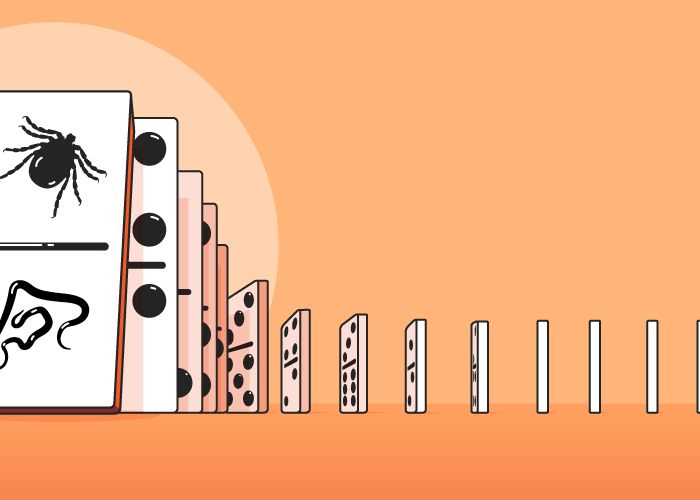

The Life Cycle of Cystoisospora
Cystoisospora (formerly known as Isospora) is one genus of protozoal parasite causing coccidiosis in dogs and cats. While many pets—particularly healthy adults—don't develop serious symptoms due to coccidiosis, illness can be severe, particularly in young puppies and kittens, and in the absence of appropriate diagnosis and treatment can even be fatal. Different species of Cystoisospora infect different species of mammals, but they share a common life cycle. Understanding this life cycle broadly informs understanding diagnostic testing as well as prevention and control methods.
Cystoisospora Life Cycle
Its complex life cycle leads to a 4-13 day prepatent period—the time between initial infection and the ability to detect infection due to shedding in feces. Infection starts when a pet ingests sporulated oocysts from infected feces, or from food or water contaminated with that feces. Once inside the GI tract, the oocysts release their sporozoites, and those sporozoites invade enterocytes. Once inside the enterocytes, the sporozoites undergo asexual multiplication (schizogony) creating a new form of the parasite within the cell called a schizont. The schizont eventually ruptures to release merozoites. At this point, clinical signs, particularly diarrhea, dehydration, and electrolyte derangements, can be seen. This is happening within a few days of infection, as infected enterocytes die, and the intestinal epithelial villi are eroded leading to the inability of the GI tract to absorb nutrients and fluid.
Eventually, the merozoites go on to invade new enterocytes and ultimately develop into the sexual stages called gametocytes. Sexual reproduction between the female and male gametocytes finally leads to the formation of oocysts. These oocysts are shed in the feces and are therefore able to be detected on fecal exams. While oocysts can be shed as early as 4-5 days after ingestion, it can take as long as 10-14 days for oocysts to be shed, leading to a lag between the onset of symptoms and the presence of detectable oocysts on fecal exam.
Factors Influencing Life Cycle and Transmission
The oocysts shed in feces must sporulate in the environment before becoming infectious to another animal. Interestingly, sporulation can only occur at fairly warm temperatures, and though sporulation is halted in extreme heat (above about 100 degrees Fahrenheit), oocysts also don't sporulate below about 65 degrees Fahrenheit. Even within this range, temperature and humidity can influence the length of time sporulation of oocysts takes, with the quickest sporulation occurring in hot, moist conditions.
While oocysts cannot sporulate in the cold, they can persist in the environment for as long as a year, as long as they're not exposed to freezing temperatures or extreme heat—and will sporulate once conditions are favorable again. The UC Koret Davis Shelter Medicine Program has reviewed options for environmental decontamination given these constraints. Host factors such as age, immune status, and coinfection can affect the severity and manifestations of infection, and the number of oocysts shed during any patent infection.
Understanding the Life Cycle for Diagnosis and Prevention
Understanding the life cycle of Cystoisospora is crucial for effective diagnosis, as well as prevention and control methods. Because of the lag between clinical signs and oocyst shedding, false negative fecal tests are possible early in infection. Importantly, advancements in testing methods mean that fecal antigen tests can now screen for Cystoisospora antigens, enhancing our ability to detect and treat this parasite effectively, which is especially important in sometimes severely affected pediatric patients. Fecal antigen testing has been shown to find up to five times more infections than fecal O&P (Ova and Parasite) testing alone, and with the high specificity of fecal antigen tests the appropriate treatment can be started promptly.
Understanding the life cycle of Cystoisospora and the factors influencing its transmission is key to improving diagnosis in our patients, as well as informing prevention and control to decrease the risk of exposure in the first place. As diagnostic testing methods continue to improve, we can look forward to even more effective control of this and other parasites.







